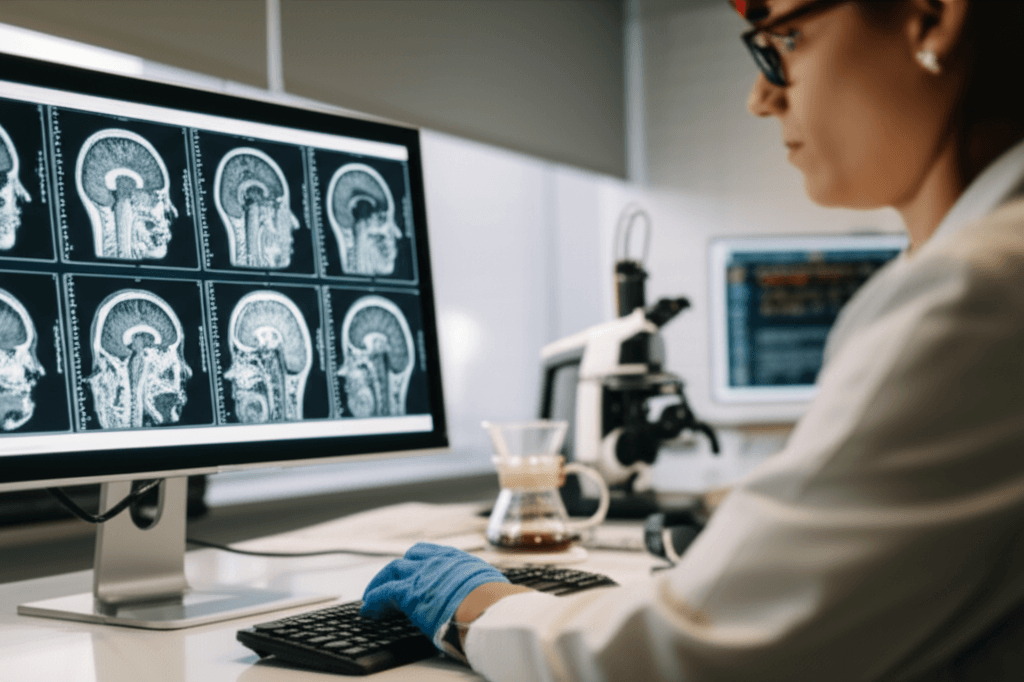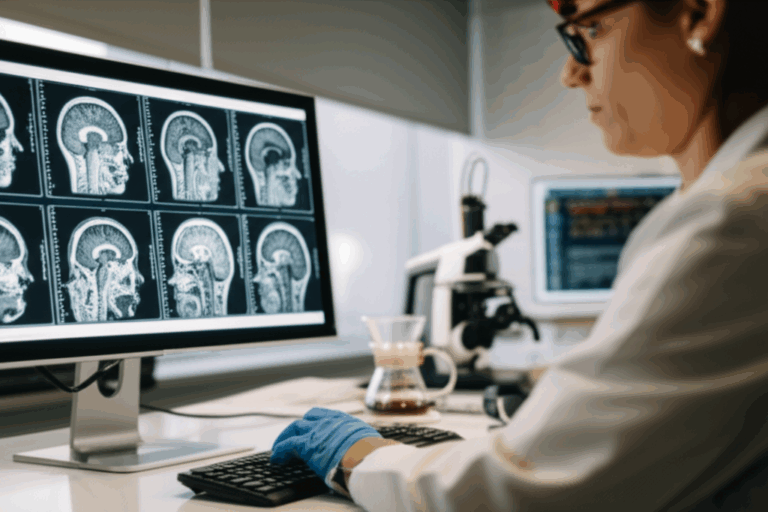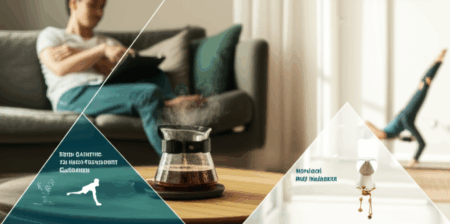In our fast-paced world, stress, self-doubt, and loneliness have become pervasive challenges, often silently eroding our well-being. Yet, emerging insights from neuroscience offer a powerful pathway to reclaim mental clarity, bolster self-assurance, and forge deeper connections. By understanding the intricate workings of our brains, we can actively rewire neural pathways and cultivate resilience against these modern afflictions. This guide explores the neurobiological underpinnings of these experiences and provides actionable, science-backed strategies to foster a more resilient and connected self.

The Neuroscience of Stress and Its Impact
Stress is the body’s natural response to perceived threats, activating a complex physiological system designed for survival. At its core, the stress response involves the hypothalamic-pituitary-adrenocortical (HPA) axis, which triggers the release of hormones like cortisol and adrenaline. Cortisol, often dubbed the “stress hormone,” helps regulate the body’s fight-or-flight response, affecting glucose metabolism, immune function, and brain activity. While acute stress can be adaptive, chronic stress, or prolonged exposure to these stress hormones, can profoundly alter brain structure and function.
Neuroscientific research reveals that chronic stress can lead to:
- Amygdala Hyperactivity: The amygdala, the brain’s “fear center,” becomes overactive, intensifying feelings of fear and anxiety. This can contribute to a constant state of vigilance and reactivity.
- Hippocampal Impairment: High cortisol levels can negatively affect the hippocampus, a brain region crucial for memory formation and learning, potentially leading to cognitive decline.
- Prefrontal Cortex Changes: The prefrontal cortex (PFC), responsible for executive functions like decision-making and cognitive control, can experience dendritic shrinkage, leading to cognitive rigidity and impaired decision-making.
- Altered Neural Communication: Chronic stress changes how neurons communicate, impacting emotional regulation and increasing impulsivity.
Neuroscience-Backed Strategies for Stress Resilience
Understanding these neural mechanisms empowers us to adopt targeted strategies for stress management.
- Mastering Breathwork: Conscious breath control is a rapid way to influence the autonomic nervous system. Techniques like “physiological sighs”—two inhales through the nose followed by an extended exhale through the mouth—can reduce sympathetic nervous system activity and promote a sense of calm by signaling the brain to de-escalate the stress response.
- Embracing Mindfulness and Meditation: Consistent mindfulness meditation practices have been shown to reduce cortisol levels and strengthen the connection between the amygdala and the prefrontal cortex, improving stress regulation. Regular practice, ideally 10-30 minutes daily, can lead to beneficial changes in brain structure.
- Harnessing the Power of Exercise: Physical activity is a potent stress reliever. It stimulates the release of endorphins, natural mood elevators, and helps regulate cortisol levels. Regular exercise also enhances neuroplasticity, allowing the brain to rewire itself more efficiently and build resilience to future stressors.
- Cognitive Reframing and Visualization: Engaging the prefrontal cortex and hippocampus through cognitive reframing (changing your perspective on a stressful situation) and visualization (mentally rehearsing successful outcomes) can help mitigate the brain’s stress response.
- Leveraging Social Support: Connecting with positive social networks can buffer the effects of stress. Acts of service or volunteering can also shift focus outward, reducing internal rumination.

Overcoming Self-Doubt: Rewiring Your Inner Critic
Self-doubt, often manifesting as imposter syndrome, is a common experience, affecting nearly 70% of people at some point in their lives, regardless of achievement. From a neuroscientific perspective, self-doubt isn’t a sign of weakness; it’s a learned brain pattern that involves specific neural circuits.
The brain regions involved in self-doubt include:
- Anterior Cingulate Cortex (ACC): This area, involved in error detection and emotional conflict, can become overactive with chronic negative self-talk, escalating anxiety and diminishing reward signals after success.
- Prefrontal Cortex (PFC): While crucial for executive functions, an overactive PFC can lead to incessant overthinking and self-criticism.
- Amygdala: Similar to stress, an overactive amygdala can trigger feelings of self-doubt and worthlessness, leading to exaggerated emotional responses to perceived failures.
- Neurotransmitter Imbalances: Dysregulation of neurotransmitters like dopamine (linked to motivation and reward), serotonin (mood), and oxytocin (social bonding) can contribute to negative self-perceptions. Low dopamine, in particular, is associated with low self-esteem, worthlessness, and a lack of motivation.
- Negativity Bias: The brain’s inherent negativity bias, an evolutionary trait designed for survival, can make the inner critic seem louder and reinforce self-critical thought patterns.
Neuroscience-Informed Strategies to Build Self-Belief
The good news is that the brain’s neuroplasticity allows us to unlearn self-doubt and build new, more confident neural pathways.
- Acknowledge and Name the Doubt: Journaling about moments of doubt and their triggers can activate brain regions associated with self-compassion, helping to reduce self-judgment. Identifying these patterns is the first step toward change.
- Reframe the Inner Dialogue: Actively challenge negative self-talk and replace it with more realistic and compassionate statements. Cognitive restructuring techniques, such as reframing “I don’t deserve this” to “I earned this through experience,” can physically reshape neural pathways over time. A powerful technique is to ask how you would speak to a child or a friend in a similar situation, then apply that same compassion to yourself to activate the medial prefrontal cortex.
- Create a “Dopamine File”: To counteract the brain’s negativity bias, create a list of all your accomplishments and read it aloud when self-doubt emerges. This “dopamine file” can override the inner critic, reinstill self-trust, and boost dopamine levels, strengthening your brain’s confidence circuits.
- Interrupt the Spiral: When caught in a loop of self-doubt, ask yourself: “Is this truly helpful, or is it just familiar?” This question can interrupt the negative spiral and prompt a shift in thinking, leveraging the brain’s adaptability to choose a different path.
- Consistent Positive Actions: Small, consistent actions that choose confidence over doubt literally build new neural pathways in the brain. The more you practice positive thinking and self-belief, the stronger and more automatic these confident pathways become. Even visualizing success for a short period can fire the same neural networks as actual success.

Combating Loneliness: Fostering Connection and Belonging
Loneliness, defined as the subjective feeling of social isolation, is a significant public health concern, impacting physical and mental health. Neuroscience highlights that loneliness is not merely a social void but a complex biological signal.
The neurobiological impacts of loneliness include:
- Pain Pathway Activation: Feelings of loneliness activate the same brain regions associated with physical pain, such as the anterior cingulate cortex and insula, suggesting it’s a form of social pain.
- Amygdala Hypervigilance: Loneliness can put the amygdala on high alert, leading to hypervigilance for social threats and increased paranoia. Lonely individuals may interpret social cues more negatively.
- Cognitive Decline: Chronic loneliness is associated with structural and functional changes in the brain, including decreased gray matter in the prefrontal cortex and an increased risk of memory decline and dementia.
- Altered Social Processing: Lonely individuals may process familiar social figures and external stimuli in more idiosyncratic ways, making shared understanding harder to achieve and reinforcing a sense of disconnection.
- Oxytocin Dysregulation: While oxytocin, the “bonding hormone,” initially increases with social isolation as a compensatory mechanism to promote social seeking, chronic loneliness can lead to a decline in its levels.
Neuroscience-Informed Strategies for Connection
Given the profound impact of loneliness on the brain, proactive strategies are essential for fostering genuine connection and well-being.
- Prioritizing Authentic Connection: While social media offers a perceived connection, research suggests excessive use can lead to loneliness if it lacks emotional intimacy. Focus on cultivating meaningful face-to-face interactions. Sharing positive emotional experiences with others can help mitigate negative interpretations of social stimuli.
- Cultivating Self-Compassion: Developing a positive relationship with oneself is a crucial foundation for connecting with others. Self-compassion practices, such as meditation that focuses on directing kindness inward, can reduce feelings of loneliness and isolation and improve resilience.
- Engaging in Acts of Service: Volunteering or helping others can broaden your perspective and disrupt the negative thought patterns associated with loneliness. It creates new opportunities for connection and shifts focus away from internal rumination.
- Challenging Negative Social Beliefs: If you go into social situations expecting rejection, your brain may be primed to find it. Neuroscience suggests that believing others will like you can empower you to be more open and receptive, fostering connection. Consciously addressing and reframing these negative social cognitions is vital.
- Exploring Oxytocin (Under Guidance): Research suggests that intranasal oxytocin can reduce acute feelings of loneliness and enhance positive bonding, particularly in group therapy settings. While not a stand-alone cure for chronic loneliness, it shows promise as an adjunct therapy to support individuals in the initial stages of psychotherapy by facilitating connection. Further research is needed for its long-term application.
By applying these neuroscience-backed strategies, we can actively shape our brains, fostering resilience against stress, transforming self-doubt into self-belief, and building a life rich in meaningful connections. This journey of neuro-rewiring is a continuous process, offering the profound opportunity to cultivate lasting well-being from the inside out.







